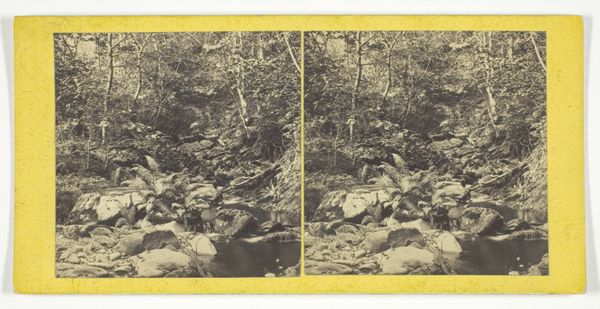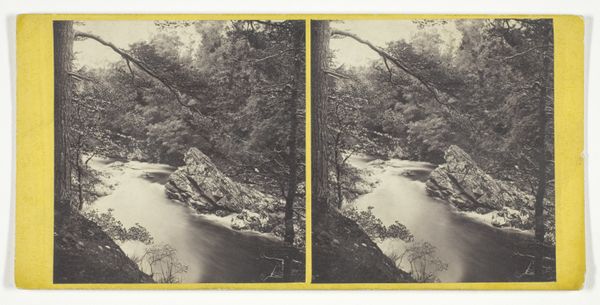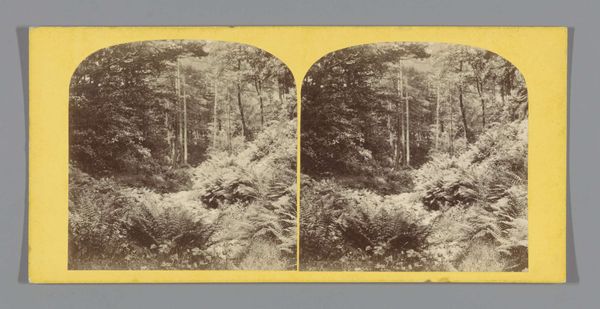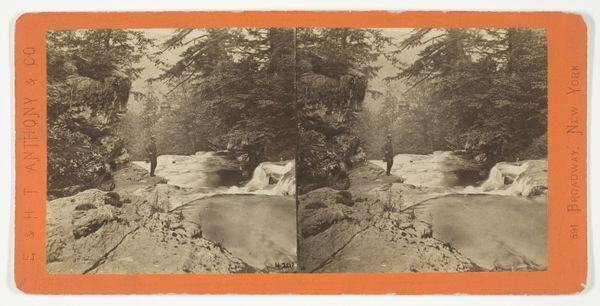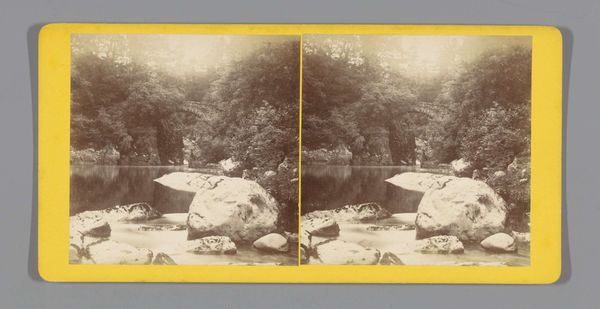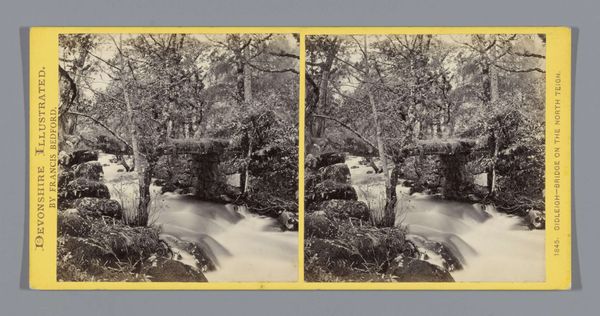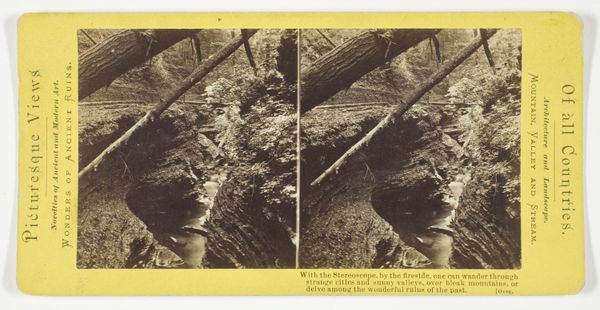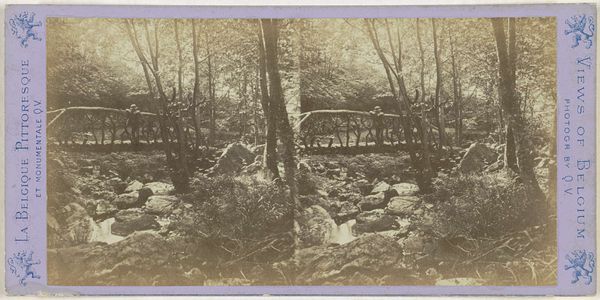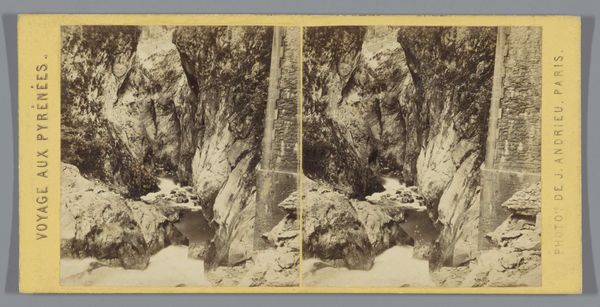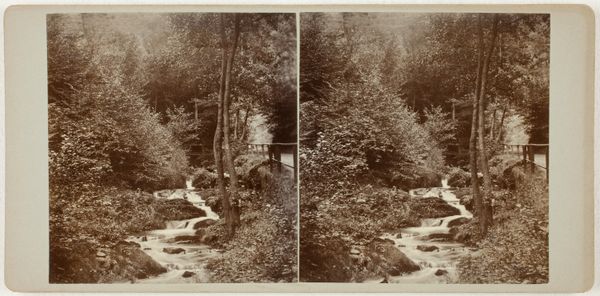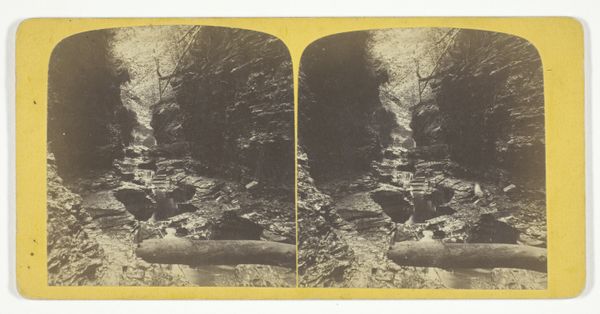
Dimensions: height 85 mm, width 170 mm
Copyright: Rijks Museum: Open Domain
Editor: This is a stereograph called "Rapids in the park of the Monasterio de Piedra" by M. Judez, probably created sometime between 1850 and 1880 using a gelatin silver print. The long exposure gives the water this ethereal, almost ghostly look. What do you see in this image, especially from a symbolic perspective? Curator: Immediately, the rushing water speaks to transformation and the relentless flow of time. The image is not simply a depiction of nature, but an attempt to capture a certain feeling—the sublime. In the 19th century, water, especially waterfalls, became a potent symbol in art and literature, embodying both beauty and terror. Do you notice how the bare trees frame the scene, adding to that duality? Editor: I do. They seem to reach upwards like skeletal fingers, contrasting with the life-giving water. What does that signify? Curator: That contrast could represent the tension between mortality and eternity, a theme common in Romanticism. Think about the cultural context: the rise of industrialization, the yearning for a return to nature. This photograph uses water as a visual symbol, channeling those feelings of longing and the sublime power of nature to wash away what's known in favor of something new. But what is the enduring symbol? Editor: Is the photographer suggesting some sort of hope or renewal through nature's power? That even in a somewhat barren landscape, there is this powerful energy source? Curator: Exactly. The symbolic landscape offers solace from an industrialized world. The 'Stroomversnellingen' offer a potential return. By the end of the 19th Century and early 20th Century, water imagery had become a favorite amongst modernist thinkers who explored it in paintings and poems. The meaning still lives, doesn’t it? Editor: Definitely, that's insightful, thank you! I’ll look at this artwork with fresh eyes.
Comments
No comments
Be the first to comment and join the conversation on the ultimate creative platform.
